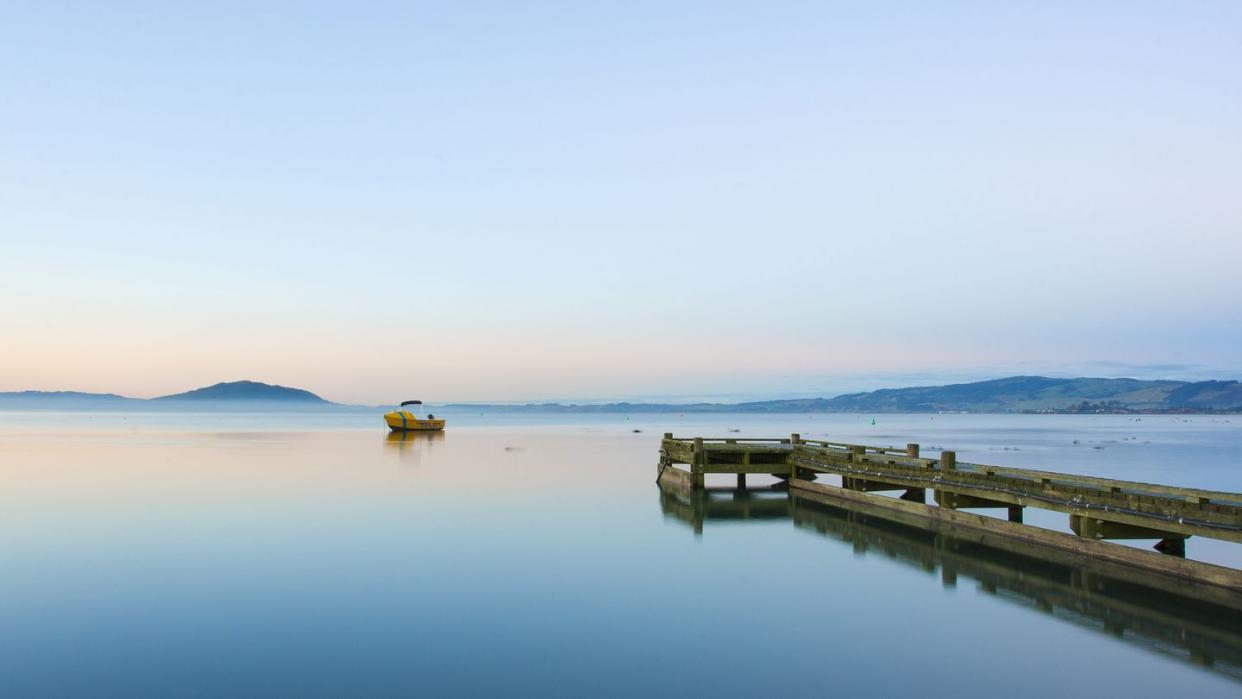A Hidden Hydrothermal World Was Just Discovered Under a Legendary Lake

"Hearst Magazines and Yahoo may earn commission or revenue on some items through these links."
Lake Rotorua is one of the most popular lakes on the North Island of New Zealand, and it’s also home to a strange, magnetic anomaly.
New maps published by a New Zealand research institute revealed the lakebed in stunning clarity by using a multibeam echo sounder and magnetic surveys.
The survey reveals details of an ancient river and a magnetic anomaly that points to the hydrothermal activity bubbling just below the lake floor.
For those who have (somehow) never seen The Lord of the Rings, the north island of New Zealand—the shooting location for Peter Jackson’s epic fantasy trilogy—is absolutely overflowing with volcanoes. Home to the Taupō Volcanic Zone (TVZ), this island is nestled in the Pacific Ring of Fire and features more than a two dozen stunning volcanoes, including Mount Doom itself: Mount Ngauruhoe.
But any volcanic zone worth its salt also comes with a vast array of impressive calderas, which are volcanic craters left behind by major eruptions. New Zealand also delivers big in this geologic category, as TVZ includes two active calderas and six older ones. One of the most well-known calderas is Lake Rotorua, and it’s also the setting of its own fantastic legend—a Māori love story between a chief’s daughter and a lowly born local.
Now, Lake Rotorua is playing host to another fantastic tale. But this one isn’t fantasy or myth—it’s a mystery. Last week, a New Zealand research institute named GNS Science released incredibly detailed maps of Lake Rotorua that have never been seen before. Covering 21 square miles of the lakebed (roughly 68% of the total lake floor), the map shows geothermal dynamism still bubbling below the surface, the details of an ancient river, and a surprisingly large negative magnetic anomaly at the southern end of the lake.
Speaking with the website LiveScience, GNS Science principal scientist Cornel de Ronde compared the maps to wearing glasses for the first time: “You finally put those glasses on, and you can see the fine print.”
The Rotorua caldera first formed 240,000 years ago, due to an massive eruption that collapsed the magma chamber below. Although the volcano hasn’t erupted in 25,000 years, the lake itself still displays the bubbling, churning evidence of hydrothermal drama. Clouds of steam drift on the surface, the water is chock-full of sulfur, and every once in a while, there are even steam explosions—sort of like popping a champagne cork.
However, volcanic rocks usually return positive magnetic readings, as they contain highly magnetic magnetite (hence the name). However, in the southern end of the lake, magnetic readings came back overwhelmingly negative. The team from GNS Science notes that this is likely evidence of hot water from the hydrothermal system beneath transforming magnetite into pyrite (a.k.a. fool’s gold), which has little to no magnetic signal. For this transformation to happen, this system must have been active for a very long time.
Lake Rotorua’s popularity with tourists is not because of warm, hot tub-like water. At the bottom of the lake, the water is still a cool 57°F due to the transparent volume of the lake itself. But while the hydrothermal action beneath this lake may not be as explosive as Mount Doom or as steamy as a Māori love story, it still reveals a bit of the fascinating history of one of the most volcanically rich regions in the world.
You Might Also Like

